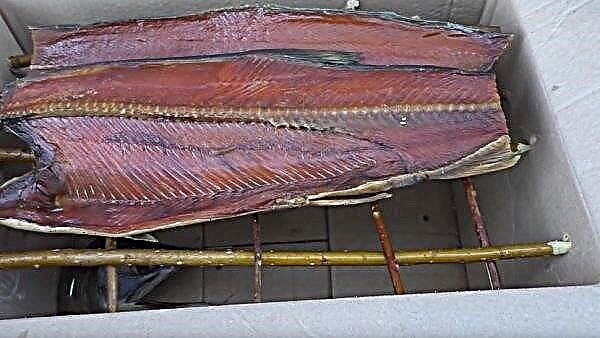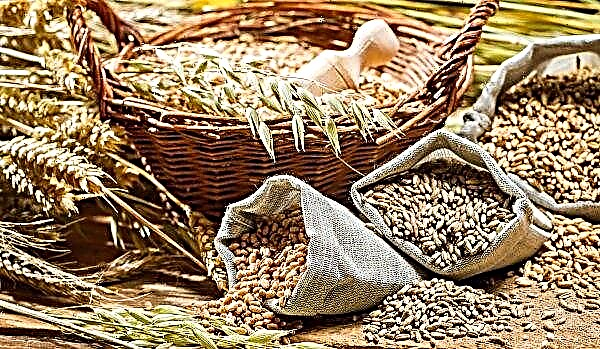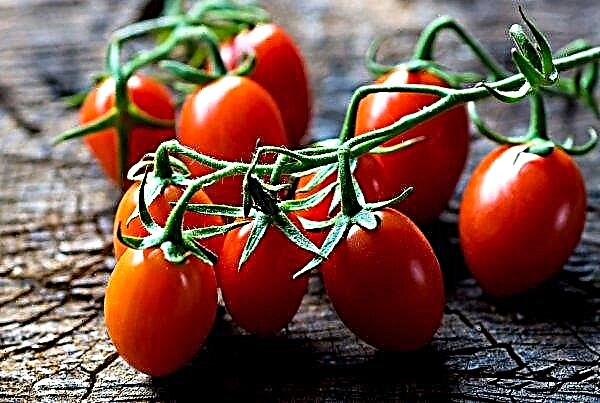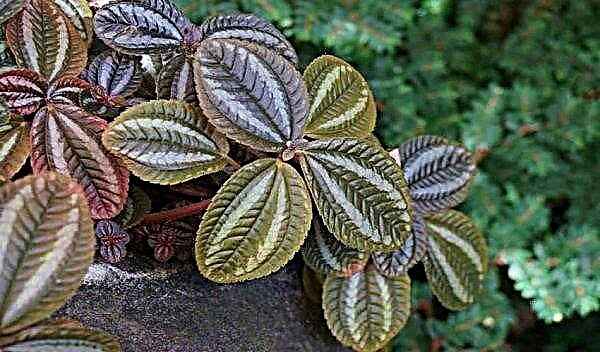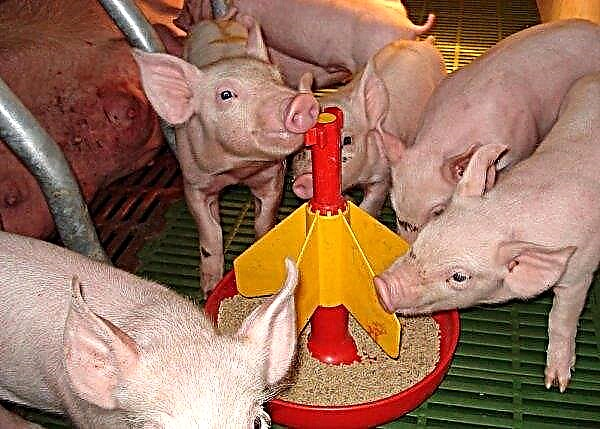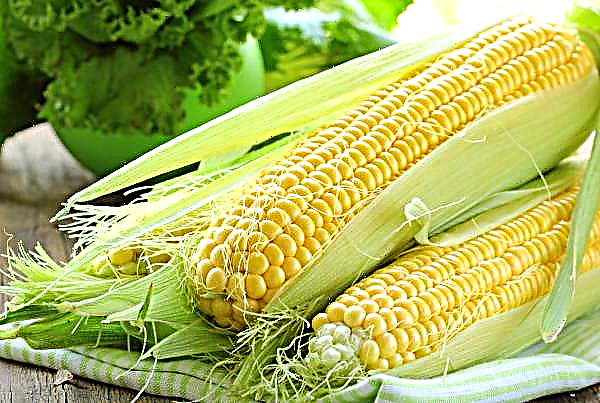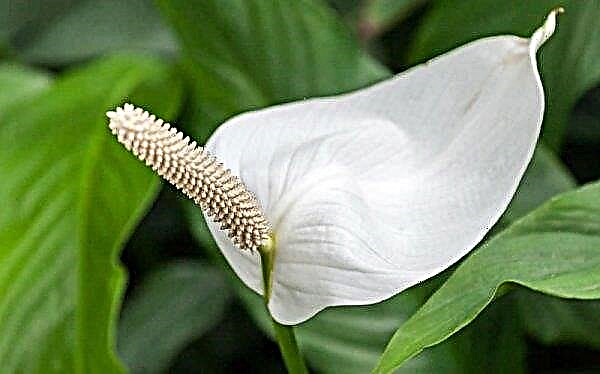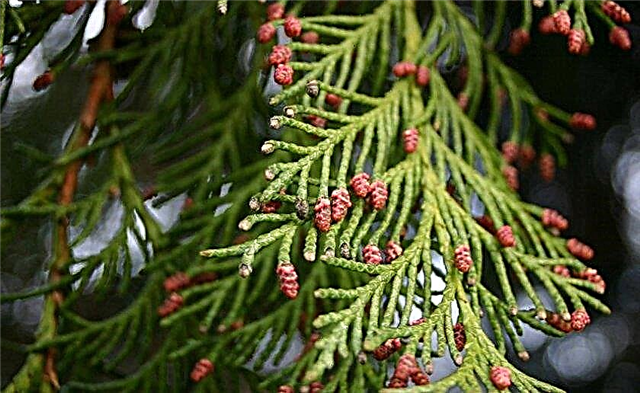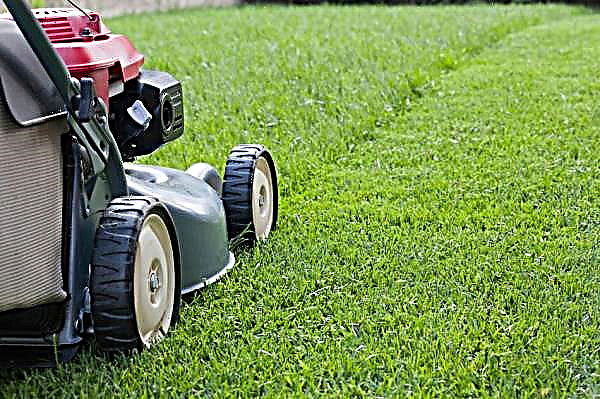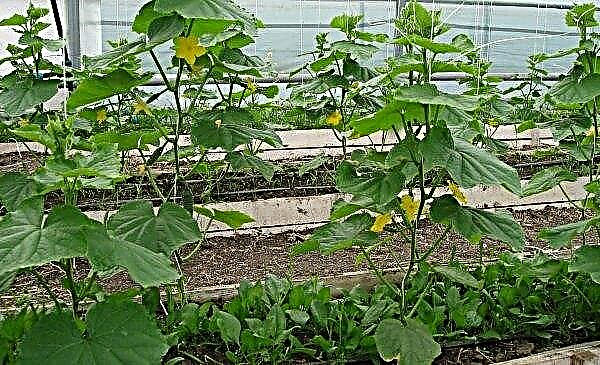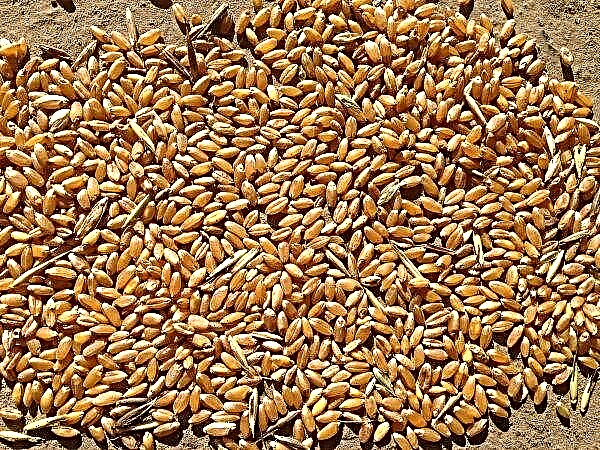This type of potato is one of the first to appear on the markets, and is among the leaders in popularity among gardeners and consumer demand. Famous variety Luck - learn more about it.
Description and characteristic
The plant is distinguished by powerful sprawling 40-centimeter bushes with dense bright green foliage with a characteristic cut. The flowers are snowy white, sepals bent down. At the end of a short flowering, small berries with seeds are formed.
On one bush, from 10 to 15 large tubers are oval or round with a small number of eyes. Color - from beige to terracotta. The peel is flat, loose, which minimizes the amount of waste when cleaning. The mass of commodity tuber is from 120 to 250 g.
The pulp is moderately compacted, white, but during cooking it can acquire a yellowish tint, which is typical when applying chloride and potassium fertilizers in the process of growing potatoes. The seed material of the variety is capable of reproduction and long-term preservation in future generations.
Did you know? Peruvian Indians began to cultivate potatoes more than 4,000 thousand years ago.
Taste qualities
Variety Udacha belongs to varieties with high palatability, universal in culinary purpose, suitable for salad, cooking (both in and without peel). Due to the lack of wateriness, the pulp retains its shape well when frying and baking, great for mashed potatoes and stewing.
The average starch content of 12–15% also has a beneficial effect on the taste properties of vegetables.
Photo gallery
Ripening period and productivity
Aging engineering and weather conditions have a great influence on the timing of ripening and productivity. Good soil type does not really matter. Luck relates to varieties with an early ripening period, you can harvest after 55-60 days from the day of planting. With the recommended planting dates and proper care, the average harvest from the bush is about 1 kg 700 g of potatoes, and an average of 42 tons per hectare.
Advantages and disadvantages
- The advantages of the Luck variety are significant:
- Resistance to low temperature. It grows well at a temperature of + 10 ° C, it is not affected by moderately cool and cloudy weather.
- Drought tolerance.
- Unpretentiousness to the soil.
- Endurance to mechanical damage (e.g. blows).
- The ability to tolerate long-term transportation and storage without loss of commercial and food taste.
- Immunity to viral diseases, high resistance to rhizoctonia and potato cancer, moderately high resistance to wrinkled mosaics, black legs, wet rot and common scab.
- Coming soon.
- The variety has few disadvantages, but nevertheless they are:
- Weak resistance to defeat by diseases such as late blight, golden nematode and alternariosis, which, in turn, adversely affects the quantity and quality of tubers.
- Luck does not tolerate thickening of rows with weeds and is demanding of alternating in time and territory.
- Planting should be carried out exclusively in warm soil, otherwise this is fraught with a slow development of the root system and later (by 14 days) ripening of tubers.
Did you know? Although Europe got potatoes from South Of America in 1580, it was brought to North America only in 1621.
Planting and growing potatoes
High yield varieties Luck is impossible without knowledge and compliance with certain agrotechnical rules. This will be discussed below.
Optimal timing
The potato planting dates are determined by the degree of soil warming up and air temperature - the soil should warm up the smallest to + 8 ° C, and the air - to + 17 ° C. Typically, such conditions occur in late April - early May. This will be the optimal time for landing Good luck.
Crop rotation rules
As noted above - Luck requires alternation in time and placement on the ground.
For this potato, it will be beneficial to grow in areas where legumes, winter crops, perennial grasses, or green fertilizers such as wolf beans or phacelia were previously cultivated. The variety will show good growth in places after melons, where before that there were cabbage or cucumbers.
Important! Potatoes should not be planted on the sites of the previous cultivation of tomato crops — these vegetables have common diseases.
But growing Good luck for several seasons in a row at the same place will lead to the accumulation of potato pests and pathogens in the soil, and also stimulate varietal impoverishment.
Soil requirements
There are no special requirements for the soil in which Luck will be grown. Potatoes of this variety grow well on sandy loam, in clay and other soil, not to mention chernozem. But, nevertheless, certain preparatory work on the site must be carried out.
Even in the fall, weeds are removed and the soil is dug in depth to the bayonet of a shovel. Then complex fertilizers are introduced - organics and minerals. Make-up is carried out according to the scheme: for 1 m² - 10 kg of compost plus 30 g of superphosphate and 15 g of potassium salt.
Check out the growing features of other early potato varieties:
In the spring, before planting, the site is again dug up (the digging depth may already be slightly less - by 20 cm) and again fertilized based on: 1 m² - a glass of ash and 2 tbsp. tablespoons of Nitrofoska mineral fertilizer (other nitrogen fertilizers can be used), then the soil is leveled. If the soil is clay, crests are formed with a height of 15–20 cm and a distance between rows of at least 0.7 m, into which potatoes will later be planted.
Preparing planting material
For planting, exclusively healthy potatoes are selected, without visible signs of illness, of medium size and weighing 50–80 g. If the tubers are too large, they can be cut, but so that 3-4 halves remain in each half. Cut recommended along the tuber.
After extracting from storage places, planting material warms up in a warm room or in the fresh air for two to three days.
Important! The tubers are cut only before planting, and after each cut, the knife is disinfected in a saturated solution of potassium permanganate (1-2%).
For disinfection and as potash top dressing, planting material is treated with wood ash and placed in a row in boxes for germination. Suitable temperature for this process is + 16 ... + 18 ° C.
Landing technology
The planting technique is simple: potatoes are planted in furrows or in holes to a depth of 5–7 cm. There should be at least 20 cm between holes and 30–40 cm between rows. During planting, rotted compost is mixed into the hole, mixed in half with ash, fertilizer should be no more than a handful.
During planting, rotted compost is mixed into the hole, mixed in half with ash, fertilizer should be no more than a handful.
Potato care after planting
During the growth of potatoes, it must be looked after, performing certain actions.
- Tacking. Its goal is to provide each tuber with the maximum space for development and maturation. The first hilling is carried out when the culture grows 10-12 cm above the ground. The bushes are sprinkled in such a way as to leave 3-4 cm on the “cap” on the surface. Two or three hills are made during the season. Final hilling - when the tops close over the rows.
- Watering. Not frequent and not plentiful - 3-4 times during the period of cultivation, each time a bucket of rain-protected water under the bush. The first watering - 7 days after planting, then with a prolonged absence of natural rainfall, but no later than two weeks before harvesting.
- Fertilizers. Three times per season. The first top dressing is done with a solution of urea or "Solution" - on a bucket of water 1 tbsp. spoon of one of the compounds to stimulate growth. The second recharge - during the activation of flower buds, is carried out to increase the number of tubers. In this case, half a liter of potassium sulfate and wood ash is poured under the bush. The final dressing - after full blooming of flowers. Used infusion of superphosphate or mullein.
- Weeding. It is carried out until the potato bushes grow to such an extent that they can close up in rows. It is carried out, as a rule, after natural or artificial moisturizing.
- Soil loosening. Usually the soil loosens during weeding.
Did you know? The collection of the International Potato Center, located in the Peruvian capital of Lima, has more than 7,000 thousand varieties of this crop.
Grade Diseases and Pests
Although the variety has good resistance to disease, it can still be affected by some ailments.
Disease
Phytophthora. Symptoms are dark gray spots on the stem and leaves. The plant is completely affected, even tubers, which begin to rot. Prevention:
Prevention:
- Recommended crop rotation.
- Timely weeding and elimination of weeds.
- Before the appearance of flowers - treatment with the composition "Ridomil" (for 10 liters of water - 25 g), with the formation of flowers - with the composition "Hall" (for 10 liters of water - 30 g).
Alternariosis. Symptoms are hard brown spots of 1–4 cm in size on the leaves, then on the stem and tubers. Prevention: compliance with crop rotation rules, applying the right amount of nitrogen and potassium to the soil. Fight - spraying with such means as “Mancozeb”, “Profit”, “Kuproksat”, “Acrobat MC”, “Ridomil Gold MC”. Seriously affected plants and tubers are destroyed.
Pests
Wireworm. A sign of damage is the occurrence of grooves, grooves, and hollows in the tubers. Prevention: during planting - top dressing in each hole with onion husks and (or) planting in the same hole of legumes. In case of damage - treatment of the bushes with a mixture: the drug "Actellik" (15 ml) + water (80 ml) + acetone (200 ml). Colorado beetle. A sign is a slowdown in plant growth and the emergence of tubers. Prevention: planting fragrant plants next to potatoes - for example, marigolds, dill, marigold. Fighting - manual collection of pests; processing according to the instructions with the preparations “Aktara”, “Corado”, “BI-58”, “Tanrek”, “Karate”.
Colorado beetle. A sign is a slowdown in plant growth and the emergence of tubers. Prevention: planting fragrant plants next to potatoes - for example, marigolds, dill, marigold. Fighting - manual collection of pests; processing according to the instructions with the preparations “Aktara”, “Corado”, “BI-58”, “Tanrek”, “Karate”. Bear Symptom is the occurrence of recesses in the tubers. Prevention: digging soil 20 cm in depth; elimination of larvae and mature pests; dressing with potassium permanganate solution. Fighting - treatment of bushes with a solution of laundry soap (for 10 liters of water - 2 pieces).
Bear Symptom is the occurrence of recesses in the tubers. Prevention: digging soil 20 cm in depth; elimination of larvae and mature pests; dressing with potassium permanganate solution. Fighting - treatment of bushes with a solution of laundry soap (for 10 liters of water - 2 pieces). Stem nematode. Symptoms - increased bushiness, a paler color of leaves, the appearance of spots on tubers. Prevention: when planting - top dressing with wood ash. In case of disease - dig up the affected plant and destroy it.
Stem nematode. Symptoms - increased bushiness, a paler color of leaves, the appearance of spots on tubers. Prevention: when planting - top dressing with wood ash. In case of disease - dig up the affected plant and destroy it.
Harvesting and storage
Harvest time, or, more simply, the time when you can dig potatoes, depends on what you plan to do with it in the future. For eating, you can dig out after 45-50 days, but if you plan to store for a long time, you need to wait 70 days from the moment of planting.
By this time (usually August), the tops are already dry, and this is a signal that the main harvest should begin. Before laying it for storage, the potatoes are thoroughly sorted out and dried in a darkened room with good blowability.
Before laying it for storage, the potatoes are thoroughly sorted out and dried in a darkened room with good blowability.
Important! It is impossible to lay out the crop of this variety for drying in a bright place — this will cause the tubers to become green, making them unfit for food.
After drying, potatoes should be stored in a furnished basement (cellar) or in another similar place at a temperature of –2 ... –4 ° С. Good keeping quality (in 88–97%) will allow the product to survive without wilting, sprouting and loss of taste throughout the winter.
With knowledge and strict adherence to agrotechnical rules, the Potato variety Luck convincingly confirms its reputation as one of the best representatives of this crop in all respects. His wonderful taste will be a worthy reward for his work.

